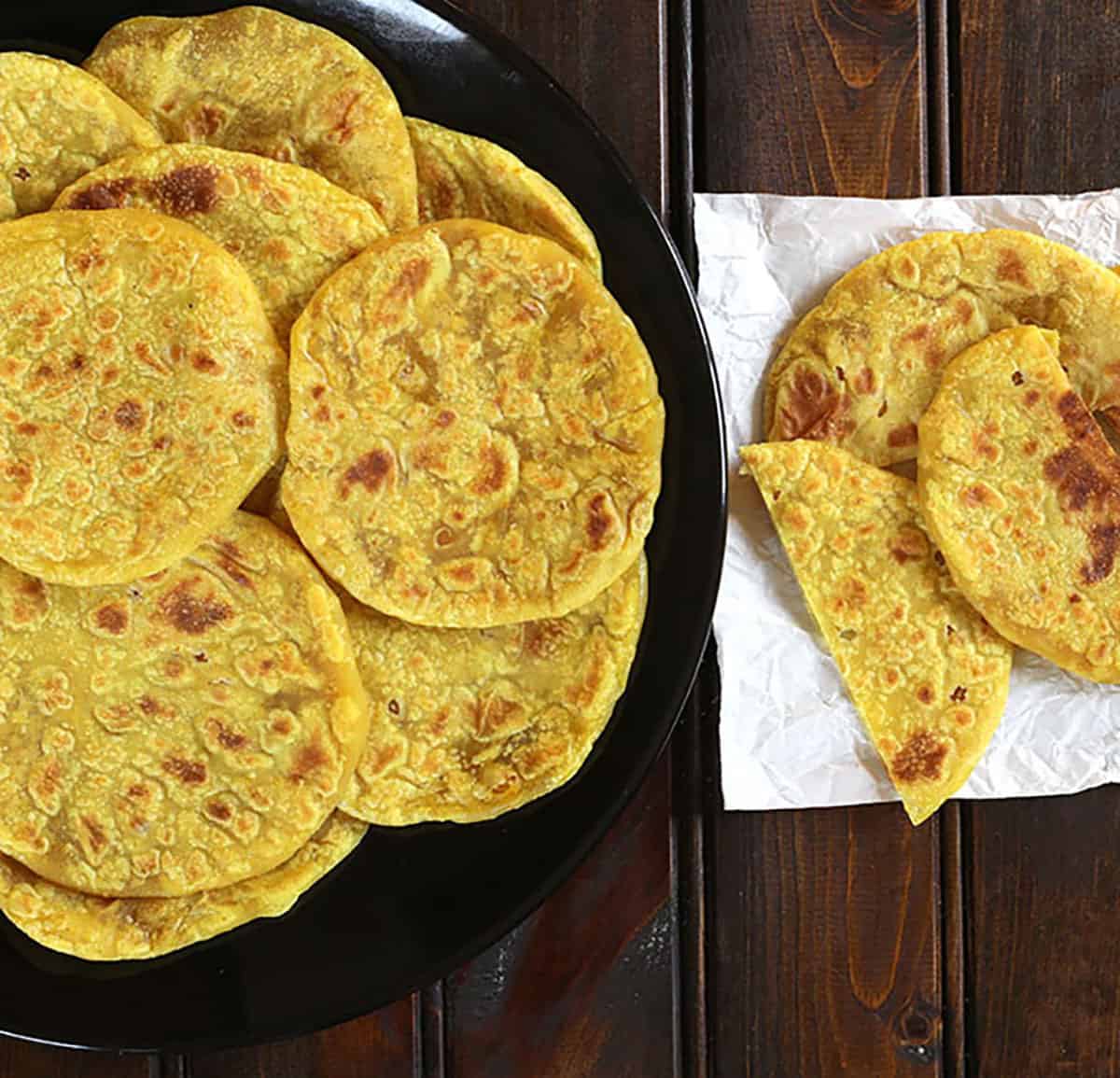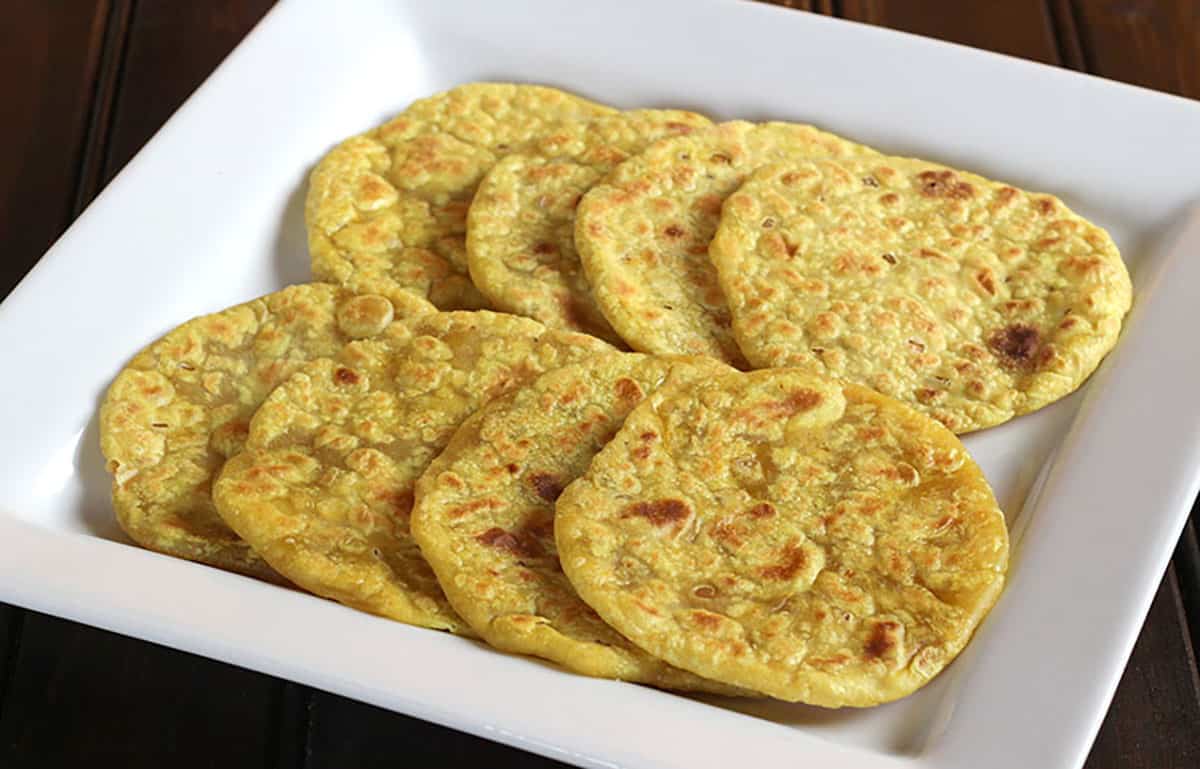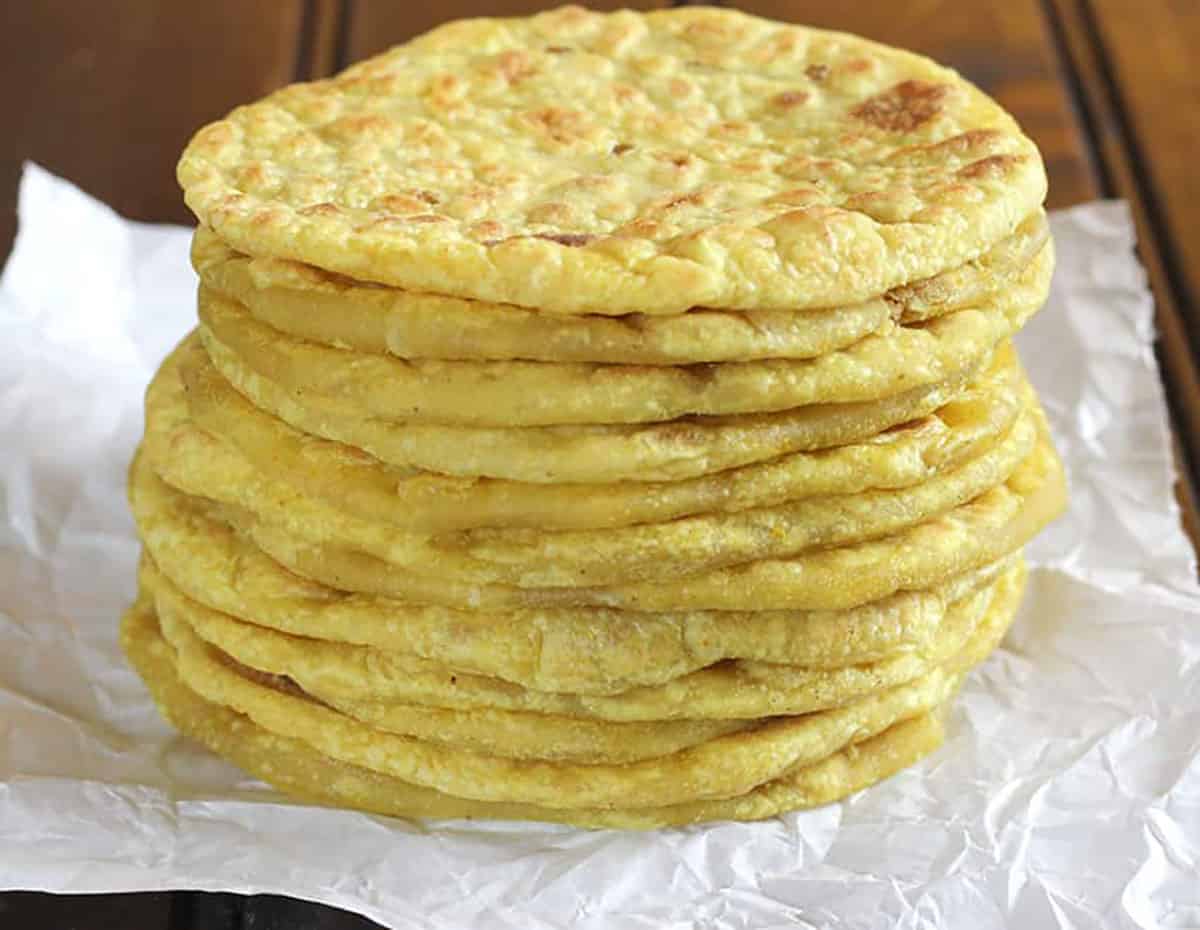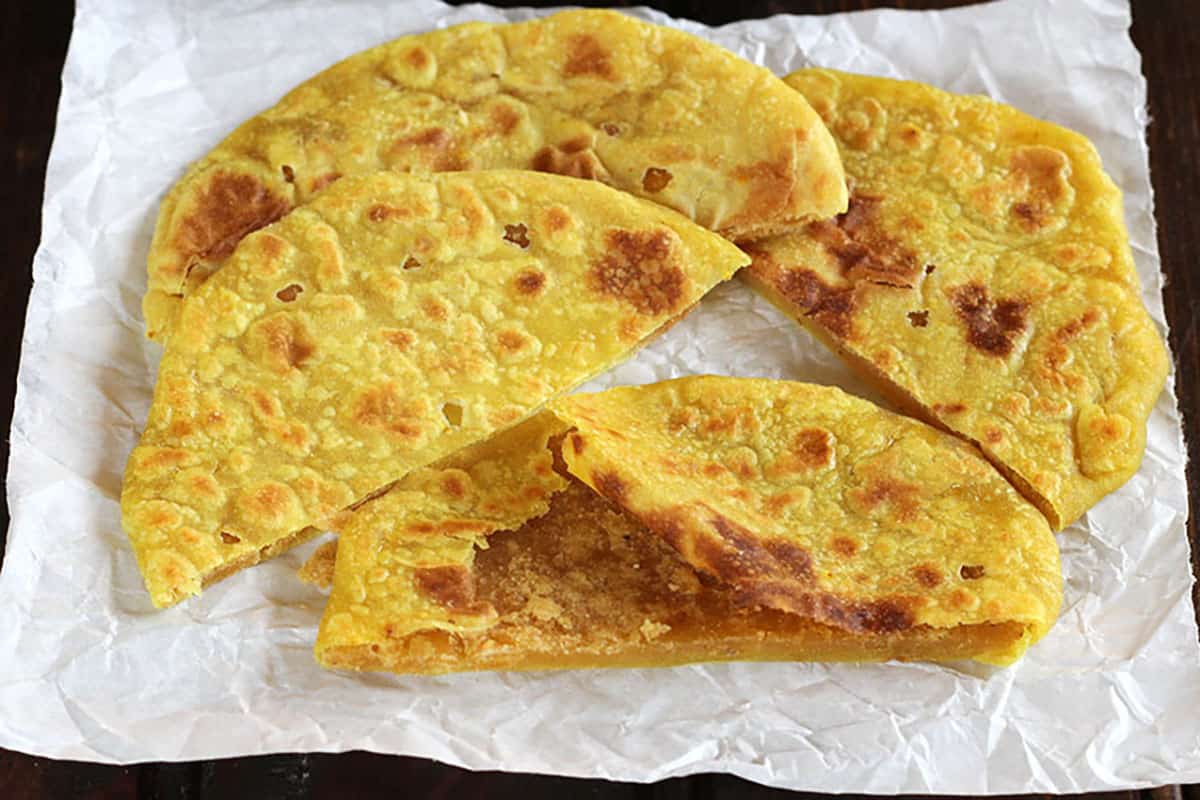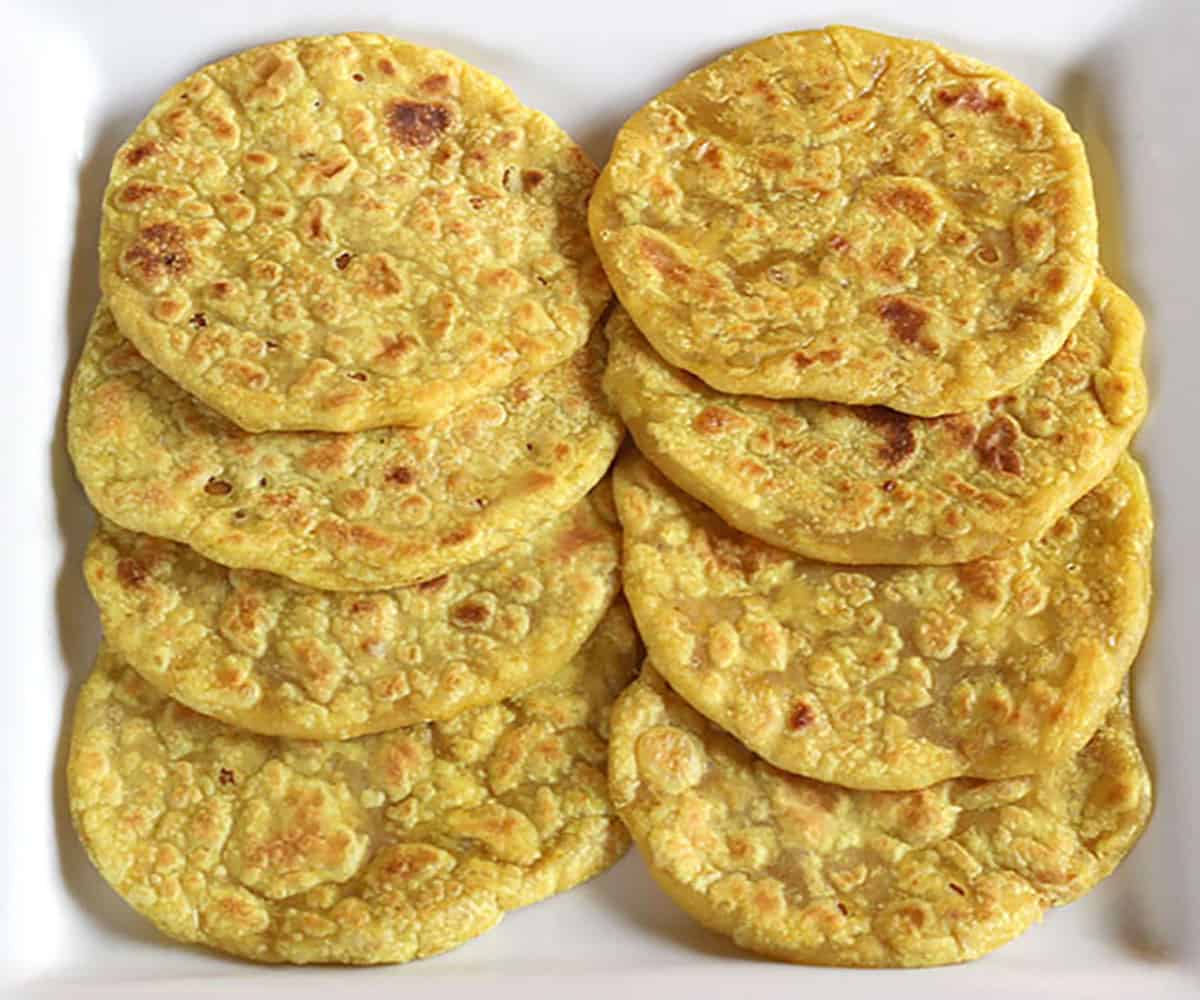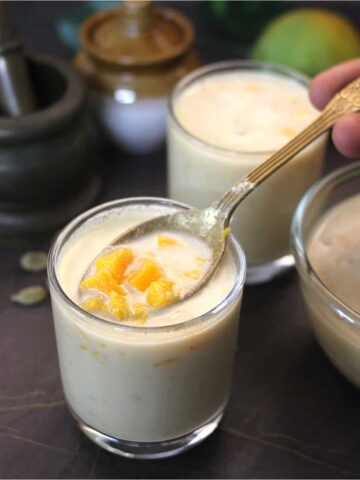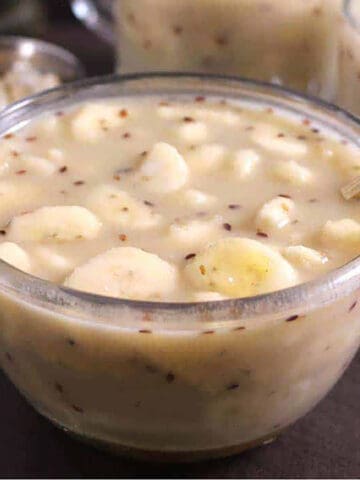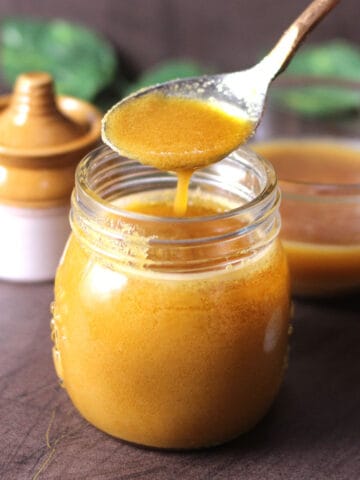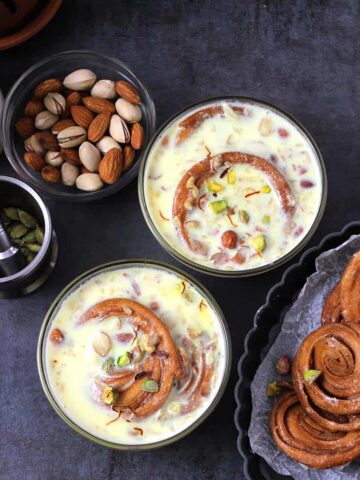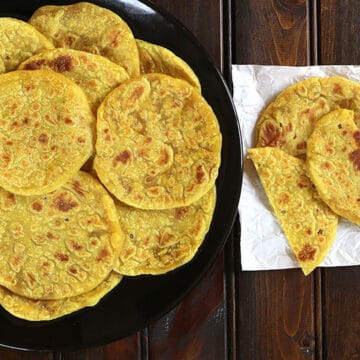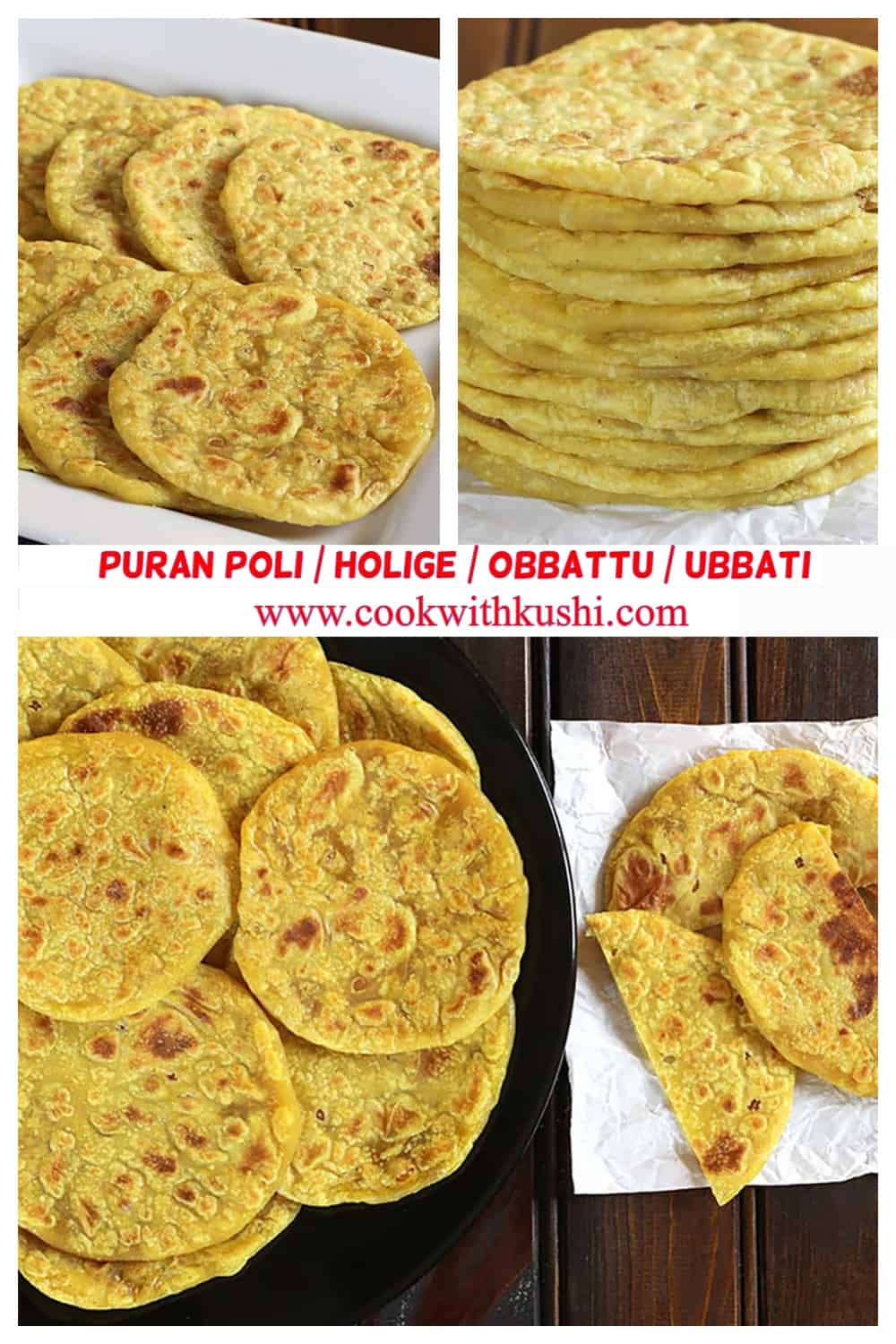Jump to:Puran Poli - Traditional Indian sweet Difference between Puran Poli / Bobbatlu / Ubbati (Holige)Grand Mother’s RecipeIs making puran poli or ubbati difficult?Tips before you start making this sweetIngredients for puran poli How to make puran poli (holige, obbattu)?Pro TipsHow to store puran poli or obbattu?How to serve puran poli or holige ?Dishes to serve with puran poliRecipe cardUser Reviews
Puran Poli - Traditional Indian sweet
Puran Poli (Pooran poli or Ubbatti) is made specially during festivals like Ganesh Chaturthi, Janmashtami, Holi, Yugadi(Ugadi), Varamahalakshmi Puja, Diwali, Makar Sankranti, and on other special occasions. If you search the internet, you will find different variations of poli (flatbread or roti) across the county. A popular Indian dessert from Maharastra, South Indian states and Gujarat. Puran means stuffing, and poli means roti. In short, it’s stuffed roti. This dessert is also known as vedmi, bobbatlu, puran puri, poley, bakshamulu, puranachi poli, god poli, oliga, abatulu, payasabolli. Today’s post is about the traditional Mangalorean Udupi style puran poli, popularly known as ubbati in Konkani, Holige in Kannada. The same flatbread is called puran poli in Maharashtra. The outer covering is made using all-purpose flour or wheat flour, and the inner filling is made with jaggery and chana dal as the main ingredients.
Difference between Puran Poli / Bobbatlu / Ubbati (Holige)
Karnataka Mangalorean style Holige, Ubbati, Obbattu is made using only maida (all-purpose flour) and a lot of oil for the outer covering, and for the stuffing, chana dal is sweetened with jaggery and flavored with cardamom powder. Andhra-style Bobbatlu is made without turmeric powder, and most regions use whole wheat flour or atta to make this. Maharashtrian-style puran poli uses less amount of oil for the outer covering and is flavored with nutmeg and dry ginger powder. Gujarati-style Puran poli is made using toor dal for the stuffing.
Grand Mother’s Recipe
Ubbati (Poli) brings back a lot of childhood memories. My granny used to make amazing recipes that were so good till the last bite that everyone in the family loved them. Abbasi was one of her best recipes. She did not wait for any occasion to prepare this for her grandkids. Whenever we asked for it, she prepared this in large numbers - no questions asked and no occasion required; such was her love. My cousins and I used to gather around her and help her prepare balls out of dough and stuffing, and at the same time, we used to enjoy eating the stuffing even before they were rolled out into rotis. So she usually prepared more amount of stuffing than what the recipe called for.
Is making puran poli or ubbati difficult?
Some people say making ubbati is a tedious job and go for store-bought ones mainly because there are chances that while rolling the bread, it might break and stuffing might come out, making your working area a little messy. All you need to do is add dry flour to that part and continue. It is OK if you can’t get the first few ubbatis or puran-polis perfect, because, eventually, you will get a grip on how to roll them. Also, remember, no matter how they look, they will taste great and will get over in no time - therefore, your hard work will not go wasted. Only practice can make you better.
Tips before you start making this sweet
You must knead the dough for at least 15 to 20 minutes. The dough should be shiny and as elastic as possible. That is, when you stretch the dough, it should not tear. The filling should not be soggy or dry. This will make it difficult to roll. Ubbati can be rolled into thick or thin discs. You can use more oil and roll it on parchment paper or dust the working surface and roll using a rolling pin. This sweet is cooked dry on both sides. Use a nonstick pan for cooking these ubbatis/holige.
These tips are not to scare but just to make sure you cook it right, and your effort should not go waste 🙂 I highly recommend making it at home, as nothing can match warm and fresh homemade puran polis with ghee. And remember, in the rarest case where you have left-over stuffing, you can prepare another yummy konkani sweet called sukrundo. I will soon share the recipe for the same.
Ingredients for puran poli
For the Dough / Kanika / Kanaka
1 cup All-purpose flour / Maida , additional ¼ cup for dusting ½ teaspoon Salt ½ teaspoon Turmeric powder ½ cup Vegetable oil
For the Filling / Stuffing / Hoorna
1 ⅓ cup Chana dal / Split yellow chickpeas 1 ½ tablespoon Butter 1 cup Jaggery / Brown sugar ½ teaspoon Cardamom powder ⅛ teaspoon Salt (pinch)
How to make puran poli (holige, obbattu)?
Prepare the dough
In a bowl, add all-purpose flour, turmeric powder, and salt to taste. Now add water little by little and form a slightly sticky dough. To this dough, you will have to add oil – start with ¼ cup of oil and knead till the oil is completely absorbed. Now continue adding oil and knead till you get a shiny elastic dough. Whenever you are tired of kneading, just add 2 tablespoon of oil to the dough, keep it aside for 20 minutes, and then start kneading again. But see that the end result should be an elastic dough. When you stretch the final dough, it should not tear. Once the dough (kanika) is ready, coat it with another tablespoon of oil. Cover it and keep it aside for 20 to 30 minutes.
Prepare the filling
Wash and cook chana dal in a pressure cooker by adding about 3 cups of water on a medium flame for about 12 - 15 minutes (or three whistles). Once the pressure cooker cools down completely, open the lid. If there is excess water, drain it carefully and blend the cooked chana dal using a whisk or in a blender till you get a smooth paste. Add very little water as possible to help you with the blending process. In a wide nonstick pan on medium heat, add butter. Once the butter melts, add chana dal paste, brown sugar (jaggery), cardamom powder, a pinch of salt, and saute for about 10 - 15 minutes or until the water evaporates completely. You must be able to form lemon-sized balls that hold their shape using this chana dal mixture. At this stage, remove the pan from the heat and let it cool for about 10 minutes.
Rolling and making Puran Poli, Ubbati
Make small lemon-sized balls using the cooled chana dal mixture. Pinch small portions of Kanika dough (approx 1 tsp), place a lemon-sized chana dal ball and bring the ends of Kanika dough together to seal. Gently roll this in all-purpose flour, and using a rolling pin, roll it gently into 4 to 5-inch diameter rounds. Meanwhile, heat a nonstick pan / tava. Cook this rolled flatbread on both sides (without oil) on medium heat until golden brown spots are developed. Transfer it to paper towels, as this will prevent it from becoming soggy. Serve them warm or with a side of melted brown butter or ghee.
Pro Tips
Let the stuffing be bigger than the dough ball size. More the filling, the better the taste 🙂 Warm it on a nonstick pan every time you serve as this will enhance the taste, or you can even microwave it for 15 to 30 seconds. Traditionally jaggery is used to prepare this recipe. I have used brown sugar, and it tastes equally good.
How to store puran poli or obbattu?
Once cooked, let them cool and transfer to an airtight conatiner. You can keep it at room temperature for 3 to 4 days. For a longer shelf life, please keep it in the freezer or refrigerator. Reheat it on tawa or microwave for 10 seconds.
How to serve puran poli or holige ?
Puran poli or Holige, or Ubbati generally taste the best when served warm and slathered with ghee. You can also eat it along with a warm cup of milk as after meal dessert or with basundi or savory katachi amti traditional Maharashtrian way. And if you like the Mangalorean way, I highly recommend you try holige with aamras or sweetened coconut milk (kayi halu).
Dishes to serve with puran poli
Recipe card
For more recent updates, follow me on Pinterest, Facebook, Instagram, Twitter. Click below to save it on Pinterest
